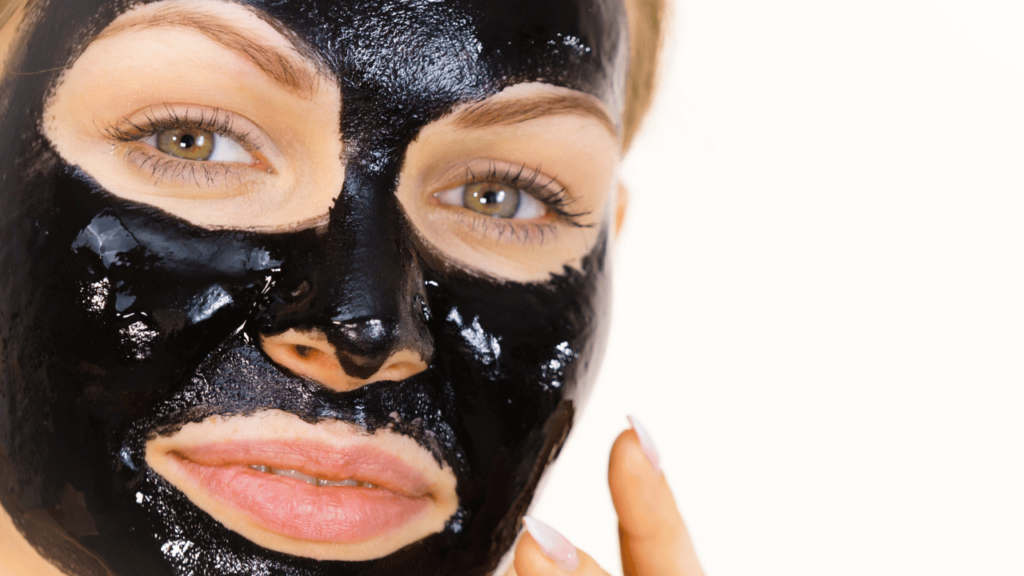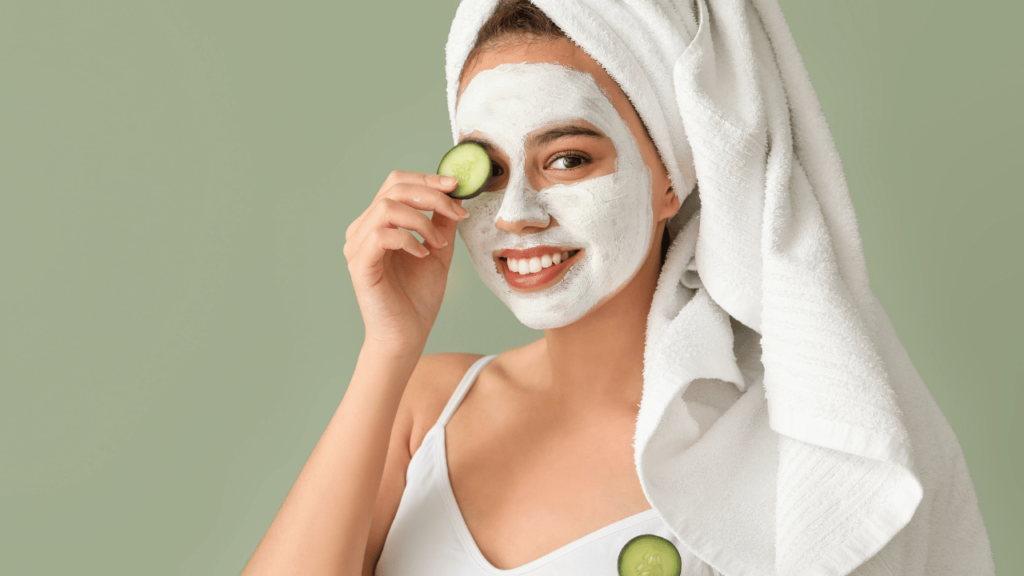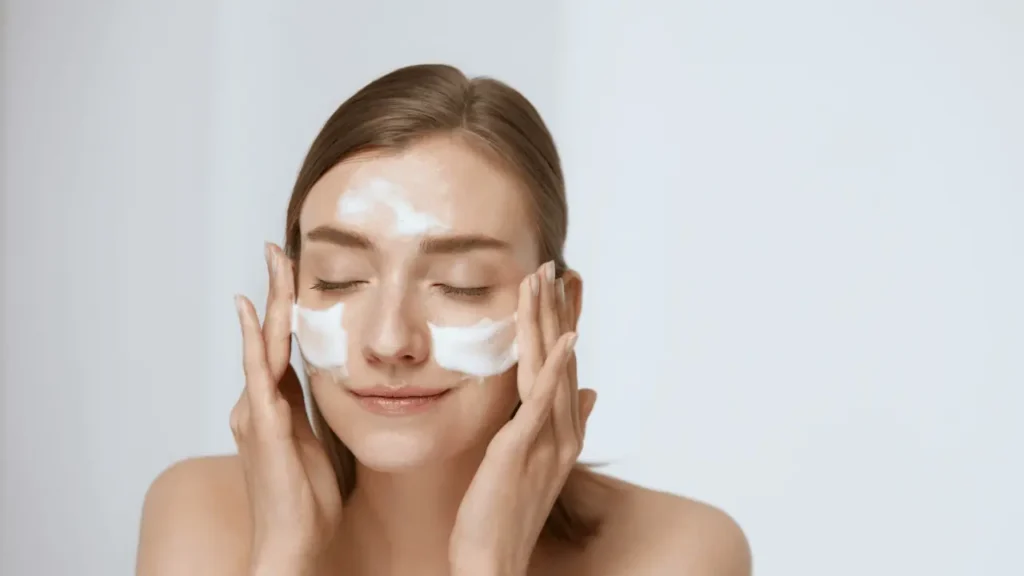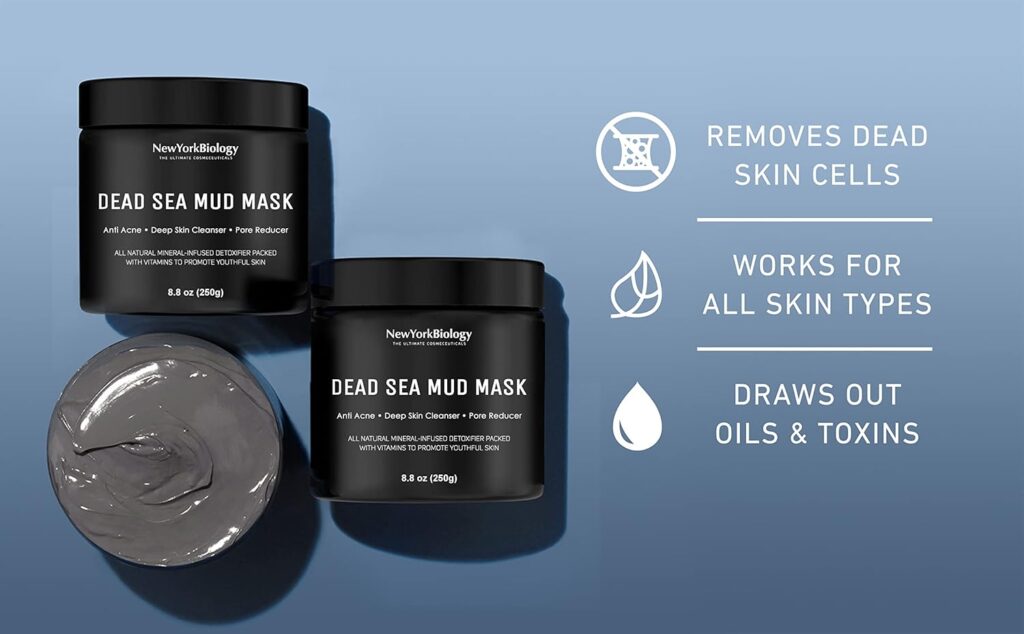If you’ve ever stared at a breakout in the mirror and wondered, “Why won’t this just go away?”—you’re not alone. The journey with acne-prone skin can feel like an endless cycle of trial and error, with more disappointment than victory. Trust me, I’ve been there.

As someone who’s navigated the frustrating terrain of acne for years and consulted countless dermatologists along the way, I’ve learned that managing acne-prone skin isn’t about finding that one “miracle product.” It’s about building a consistent, scientifically sound routine that addresses the unique needs of your skin.
In this guide, I’m breaking down exactly how to create a skincare routine for acne-prone skin that actually delivers results. No unrealistic promises or complicated 15-step regimens—just practical, research-backed advice that works. Whether you’re dealing with hormonal breakouts, stress-induced acne, or persistent pimples that seem to have taken up permanent residence, this roadmap will help simplify your approach and set you on the path to clearer skin.
Why Does Acne Happen? Breaking Down the Science
It’s crucial to understand what’s actually happening beneath your skin. Acne isn’t simply a surface-level issue—it’s a complex interaction of several factors:
Excess oil production (sebum): When your sebaceous glands produce too much oil, it can combine with dead skin cells to clog pores.
Clogged pores: Dead skin cells that don’t shed properly mix with sebum, creating the perfect environment for breakouts.
Bacteria proliferation: P. acnes bacteria thrive in clogged pores, triggering inflammation.
Inflammation: The body’s natural response to bacteria leads to the redness, swelling, and tenderness we associate with pimples.
Several triggers can exacerbate these processes, including:
- Hormonal fluctuations (hello, period breakouts)
- Chronic stress (which increases cortisol and oil production)
- Diet (high-glycemic foods and dairy are common culprits for some)
- Environmental factors like humidity and pollution
The good news? Understanding these mechanisms means we can target each part of the acne-formation process with the right ingredients and habits. Acne-prone skin isn’t a life sentence—it’s a condition that can be effectively managed.
The 5 Non-Negotiables for Your Acne Skincare Routine

Step 1: Cleanse Gently (But Thoroughly)
The foundation of any acne skincare routine is proper cleansing. The goal is to remove excess oil, makeup, and environmental pollutants without stripping your skin’s natural moisture barrier.
Morning cleanse: A gentle foaming cleanser helps remove overnight oil buildup. Look for formulas with salicylic acid (0.5-2%) for added pore-clearing benefits.
Evening double-cleanse: For makeup wearers, start with an oil-based cleanser or micellar water to dissolve makeup and sunscreen, then follow with your regular cleanser.
What to look for: Sulfate-free, non-comedogenic formulations with terms like “for acne-prone skin” or “oil-free.”
Product recommendations:
- Budget-friendly: CeraVe Foaming Facial Cleanser (contains ceramides and niacinamide)
- Mid-range: La Roche-Posay Effaclar Medicated Cleanser (2% salicylic acid)
Step 2: Tone Without Drying Out Your Skin
Contrary to popular belief, toners aren’t meant to “close pores” (pores don’t open and close like doors). Modern toners balance your skin’s pH after cleansing and deliver beneficial ingredients.
What to look for: Alcohol-free formulas with ingredients like niacinamide (reduces inflammation), witch hazel (natural astringent), or glycolic acid (mild chemical exfoliant).
What to avoid: Harsh astringents that leave your skin feeling tight—this sensation isn’t “clean,” it’s dehydrated.
Product recommendations:
- Budget-friendly: Thayers Alcohol-Free Witch Hazel Facial Toner
- Mid-range: Paula’s Choice 2% BHA Liquid Exfoliant (doubles as an exfoliating toner)
Step 3: Treat with Active Ingredients
This is where you bring in the heavy hitters that actively target acne. The key is choosing the right actives for your specific acne type and using them consistently without overdoing it.
For blackheads and whiteheads: Salicylic acid (BHA) penetrates oil and dissolves the debris inside pores.
For inflammatory acne: Benzoyl peroxide kills bacteria and reduces inflammation (start with 2.5% strength).
For long-term prevention and texture: Retinoids increase cell turnover and prevent pore clogging (start with adapalene 0.1% for beginners).
Product recommendations:
- Budget-friendly: The Ordinary Niacinamide 10% + Zinc 1% (regulates oil production)
- Mid-range: Differin Gel (adapalene 0.1%, an over-the-counter retinoid)
Pro tip: Start using active ingredients every other day, then gradually increase frequency as your skin builds tolerance. Always patch test new products.
Step 4: Moisturize—Yes, Even Oily Skin Needs Hydration!
One of the biggest myths about acne-prone skin is that moisturizer will make it oilier. In reality, skipping moisturizer can trigger your skin to produce more oil to compensate for dehydration.
What to look for: Oil-free, non-comedogenic, lightweight gel or lotion formulas with hydrating ingredients like hyaluronic acid, glycerin, or ceramides.
Product recommendations:
- Budget-friendly: Neutrogena Hydro Boost Gel-Cream for Extra-Dry Skin (fragrance-free version)
- Mid-range: EltaMD PM Therapy Facial Moisturizer (contains niacinamide and antioxidants)
Step 5: Sunscreen: Your Skin’s Best Defense
Sunscreen isn’t negotiable, especially for acne-prone skin. Many acne treatments increase sun sensitivity, and UV exposure can darken acne scars (post-inflammatory hyperpigmentation).
What to look for: Oil-free, non-comedogenic formulas with SPF 30+. Mineral sunscreens (zinc oxide, titanium dioxide) are often better tolerated by acne-prone skin.
Product recommendations:
- Budget-friendly: Australian Gold Botanical SPF 50 Tinted Face Mineral Lotion
- Mid-range: EltaMD UV Clear Broad-Spectrum SPF 46 (contains niacinamide, ideal for acne-prone skin)

Acne Heroes vs. Villains: What to Look for in Products
Acne-Fighting Heroes:
Salicylic Acid (BHA): Oil-soluble exfoliant that penetrates pores to dissolve clogs; ideal for blackheads and whiteheads.
Benzoyl Peroxide: Antibacterial that kills acne-causing bacteria; best for inflammatory acne (start with 2.5% concentration).
Niacinamide (Vitamin B3): Reduces inflammation, regulates oil production, and strengthens the skin barrier; gentle enough for sensitive skin.
Azelaic Acid: Reduces inflammation, kills bacteria, and fades hyperpigmentation; excellent for acne and rosacea.
Tea Tree Oil: Natural antibacterial (use only in diluted products, not pure oil).
Zinc: Anti-inflammatory that regulates oil production and speeds healing.
Hyaluronic Acid: Hydrates without adding oil; helps maintain skin balance.
Pore-Clogging Villains:
Isopropyl Myristate: Common in moisturizers, highly comedogenic.
Coconut Oil: Despite natural claims, it is highly comedogenic for most acne-prone skin.
Alcohol Denat/SD Alcohol: Drying, irritating, and disrupting skin barrier.
Artificial Fragrance: A common irritant that can trigger inflammation.
Heavy Butters: Shea butter, cocoa butter—while great for dry skin, often too heavy for acne-prone skin.
Are You Sabotaging Your Skin? Avoid These 5 Mistakes

1. Over-exfoliating
When you see immediate results from an exfoliant, it’s tempting to use it daily. Resist this urge! Over-exfoliation damages your skin barrier, leading to more inflammation and—ironically—more breakouts. Limit chemical exfoliants to 2-3 times weekly.
2. Picking and Popping
We all know we shouldn’t do it, yet the temptation to “fix” a pimple by popping it is strong. This introduces bacteria, prolongs healing time, and significantly increases scarring risk. Instead, apply a spot treatment with benzoyl peroxide or salicylic acid and let it do the work.
3. Using Harsh Physical Scrubs
Those satisfying gritty face scrubs? They create micro-tears in your skin and spread bacteria across your face. Replace them with gentle chemical exfoliants like AHAs and BHAs that dissolve dead skin without physical friction.
4. Layering Too Many Active Ingredients
Using benzoyl peroxide, salicylic acid, glycolic acid, and retinol all at once isn’t a power move—it’s a recipe for irritation. Stick to one active in the morning (like vitamin C) and one at night (like retinol), and never layer active ingredients unless directed by a dermatologist.
5. Expecting Overnight Results
Real, sustainable skin improvement takes time. New acne treatments need at least 4-6 weeks to show results, and complete skin cell turnover takes about 28 days. Consistency trumps intensity every time.
Your Skin Isn’t Just About Products: Holistic Habits Matter
While topical treatments are crucial, addressing these lifestyle factors can dramatically improve your acne-prone skin:
Diet Connections
Research increasingly supports links between diet and acne. Consider monitoring your skin’s reaction to:
- High-glycemic foods (white bread, sugary treats)
- Dairy products (especially skim milk)
- Whey protein supplements
Many find that reducing these foods leads to fewer breakouts, though individual responses vary significantly.
Stress Management
The cortisol spike from chronic stress directly increases sebum production. Incorporate stress-reduction practices like:
- Regular exercise
- Meditation or deep breathing
- Adequate sleep (7-9 hours)
- Setting boundaries on work/screen time
Hygiene Habits
Often overlooked, these simple changes can make a significant difference:
- Change pillowcases twice weekly
- Clean phone screens daily with alcohol wipes
- Wash your hands before touching your face
- Cleanse skin immediately after sweating
- Wash makeup brushes weekly

Your Top Acne Skincare Routine Questions—Answered
“Can I wear makeup if I have acne-prone skin?”
Absolutely! Look for non-comedogenic, oil-free foundations and concealers. Mineral makeup containing zinc oxide can actually have anti-inflammatory benefits. Always remove makeup thoroughly before bed, no exceptions.
“How long until I see results from my acne skincare routine?”
Be patient—acne products typically take 4-6 weeks to show significant improvement. Complete clearing may take 3 months or more with consistent use. Take progress photos every 2-3 weeks, as daily observation makes changes harder to notice.
“Should I use different products for hormonal acne?”
Hormonal acne (typically around the jawline and chin) often responds well to:
- Retinoids
- Niacinamide
- Azelaic acid
- Green tea extract
For persistent hormonal acne, consult a dermatologist about prescription options like spironolactone or certain birth control pills.
“What about natural remedies for acne-prone skin?”
Some natural ingredients have research-backed benefits:
- Tea tree oil (in properly formulated products)
- Green tea extract (anti-inflammatory)
- Honey (antibacterial)
- Aloe vera (soothing)
However, “natural” doesn’t automatically mean better or safer—poison ivy is natural too! Patch test natural remedies and introduce them one at a time.
The Journey to Clearer Skin: Patience and Persistence
Building an effective skincare routine for acne-prone skin isn’t about finding a quick fix—it’s about consistent care that respects your skin’s needs. Remember that perfect skin doesn’t exist, and breakouts don’t define your worth or beauty.
Focus on progress, not perfection. Celebrate small victories like fewer breakouts, reduced inflammation, or faster healing time. Your skin is constantly renewing itself, giving you countless opportunities to support its health.
Most importantly, be kind to yourself throughout this process. Treating acne is a marathon, not a sprint, and each day of consistent care brings you closer to your clearest skin.
What part of your acne skincare routine has made the biggest difference for you? Share your experience in the comments—your journey might be exactly what someone else needs to hear









Pingback: Hormonal Acne Explained: Causes, Triggers, and Solutions
Pingback: Summer Skincare Guide: 10 Tips For Managing Acne-Prone Skin When the Heat Is On